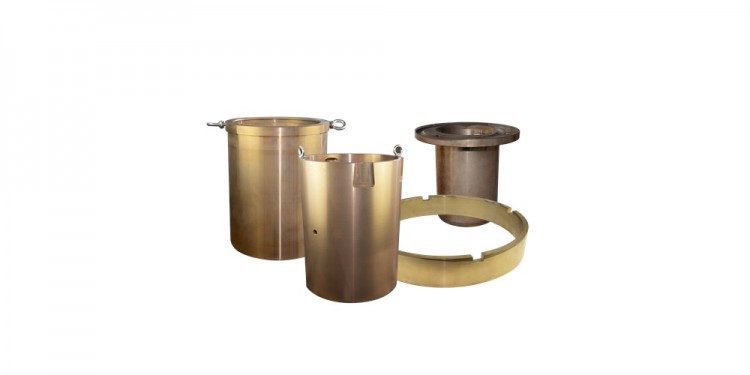
There are many reasons for bushing cracks, but most of them have the following reasons.
- 22 Dec 2025
- 2725 times watched
1.Entering non-crushed objects
Non-crushed material enters the cone crusher, commonly known as "over-iron".If the iron is too light, the cone will stop, and the crusher will damage the parts and motor.The impact load generated by the iron is particularly severe for the crushing of the bushing.
2.Overhaul installation
The bushing is not joined to the eccentric shaft.According to the inspection regulations, the bushing and the eccentric shaft must be studied separately.However, in actual work, it is often overlooked because the research and development is entirely manpower and labor intensive and time consuming.This creates a local gap between the two.When the impact load and load are large, cracks often occur in the taper sleeve at the gap.
The effect of casting zinc alloy.Zinc alloy is cast between the two planes of the bushing and the two grooves of the eccentric shaft to prevent the movement of the bushing.If the alloy is not filled with all the gaps, it may cause the bushing sleeve to be displaced with the eccentric sleeve when subjected to shock vibration, including turning and climbing.After the eccentric sleeve is displaced, a gap is formed with the eccentric shaft, which is highly susceptible to impact and cracks.In addition, the hot-zinc-zinc alloy tends to cause deformation of the taper sleeve, and if it is not inspected, the convex portion of the hot-spotted portion is susceptible to cracking.
The bushing is fitted with an empty eccentric shaft that is too loose or too tight.When the bushing is installed in the empty eccentric shaft, the two must be pressed with a special tool.If it is too loose, the bushing is easy to loosen; when it is too tight, the bushing generates stress inside, and when it is affected by heat or other factors, it protrudes inward, and cracks are generated by the impact.
3.
The clearance between the eccentric sleeve and the base bushing is too large. The eccentric sleeve is skewed during operation, causing the upper part of the sleeve to be stressed and cracked.
The eccentric sleeve is matched with the main shaft, and the gap between the upper sleeve and the main shaft of the cone sleeve is not suitable.Too small to cause the spindle to lock. If it is too large, the impact of the main shaft on the taper sleeve will increase, which will easily cause cracks in the taper sleeve.
4.
Some parts of the cone crusher must be replaced after being worn or deformed to a certain extent, such as eccentric bushings, liners, etc.However, in order to save costs, some manufacturers still deal with worn parts, resulting in frequent cracking of the taper sleeve.
5.
Intermittent feeding to the mine is extremely prone to impact and vibration, resulting in cracks in the taper sleeve.
6.
Poor lubrication of the equipment or poor quality of the lubricating oil causes the oil temperature to rise and the spindle to lock.The taper sleeve was burned and even caused internal stress to cause cracks and was forced to be replaced.
7.
The ore contains more mud and is more viscous.Resulting in retention in the crushing chamber, the mine is not smooth until it blocks.This causes overload operation and can cause cracks in the bushing.

Leave us a message